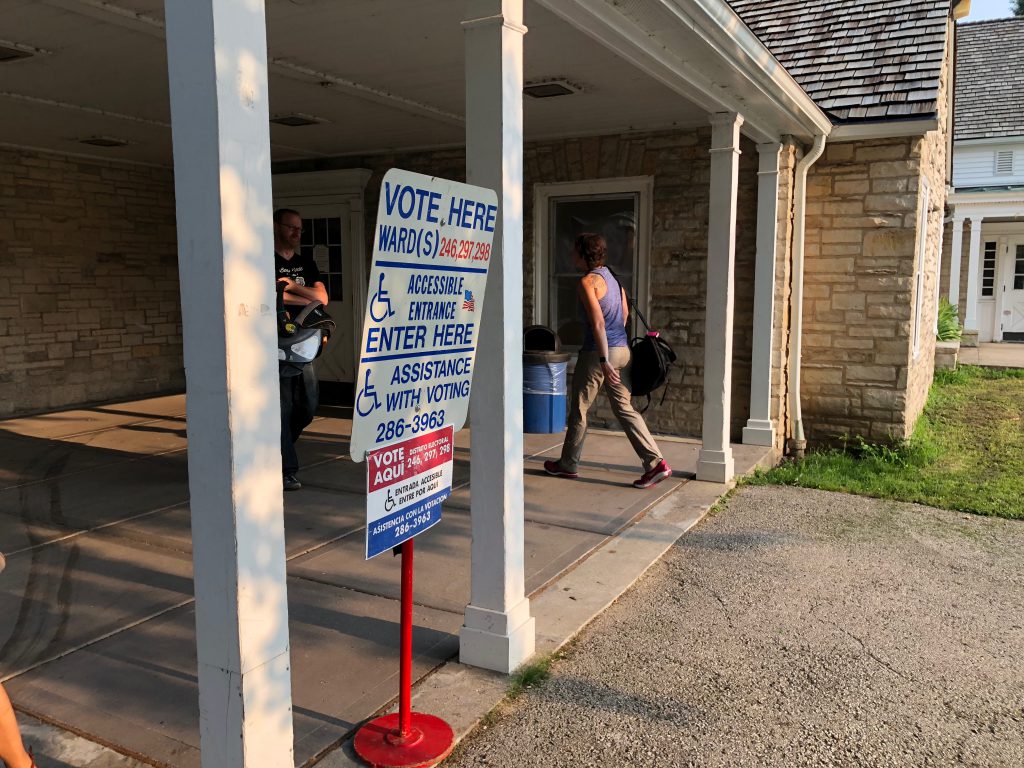The Rise of Absentee Ballots
Just 12% of all ballots in 2004, could hit 33% in 2020.
One-third of Wisconsin’s 2020 vote for President could come from absentee ballots, as more and more voters make their choices early.
Records of state agencies that have overseen elections show that the percentage of Wisconsin voters casting absentee ballots in presidential elections more than doubled over 12 years – from 12 percent of all voters in 2004 (President George Bush’s re-election) to 27.2 percent in 2016 (election of President Donald Trump).
The percentage of voters using absentee ballots in elections for governor also doubled: 7.7 percent in 2006 (re-election of Gov. Jim Doyle) to 15.4 percent in 2014 (re-election of Gov. Scott Walker).
State Elections Commission officials are not making predictions about what percentage of votes on Nov. 6 will be cast early. But, even with those dramatic increases in Wisconsin, the state still lags the nation, said UW-Madison Political Science Professor Barry Burden, who has studied changes in voting patterns.
“Early voting rates are generally higher in presidential elections than midterms, so the 2020 contest could definitely see a third of Wisconsinites voting early.”
For decades, absentee ballots nationally were a “small number,” Burden said. In the 1990s, for example, the percentage of absentee ballots cast in Wisconsin for U.S. President or governor ranged from a low of 2.9 percent in 1990 (re-election of Gov. Tommy Thompson) to a high of 4.6 percent in 1996 (re-election of President Bill Clinton)
Preliminary State Elections Commission records show about 9 percent of all votes cast in Milwaukee County in Aug. 14 primaries for governor were absentee ballots.
Several factors explain the soaring numbers of absentee ballots:
*Legislators and local officials across the nation made it easier to cast them in ways that included ending requirements that voters be physically unable to go to the polls, or having to swear they would be away from home, on election day.
“In Wisconsin, a voter does not need an excuse or reason for requesting an absentee ballot,” said Erin Grunze, executive director of the League of Women Voters of Wisconsin.
*About two years ago, Wisconsin launched a MyVote on-line Website, making it easier to request an absentee ballot.
*Many older voters prefer to visit their local clerk’s office early to avoid election-day lines. Some rural voters check with local clerks asking when they can stop in to vote absentee.
*Both political parties have made casting absentee ballots by loyal voters a key part of get-out-the-vote (GOV) drives. “Parties like to get the vote cast and in the (ballot) box,” said pollster and Marquette University Law School Professor Charles Franklin.
Republican elected officials tried to limit the hours for casting absentee votes in 2015, but federal judges ruled the changes unconstitutional, according to a memo from the non-partisan Legislative Council.
State Republican Party spokesman Alec Zimmerman said the party has recognized the trend of voting early. “With voters increasingly turning to early voting options, we are focused on maximizing this opportunity to turn out more conservative voters,” Zimmerman added.
“In 2016 the municipality with the highest rate of early voting was the Village of Plover, which went solidly for Trump,” Burden noted. Plover officials said 68 percent of 6,504 votes were cast early – the highest percentage in the state.
“At the same time, many Democrat-dominated Dane County communities have high rates of early voting, in part because local clerks have been encouraging it,” Burden said.
Dane County Clerk Scott McDonell said a record 66,834 absentee ballots were issued by the City of Madison before the 2016 presidential election – about 46 percent of all Madison votes in that election.
Many of Madison’s absentee ballots were cast at 13 satellite locations like public libraries, a municipal engineering office and on both UW-Madison and Edgewood College campuses.
Grunze and McDonell said groups like the League of Women Voters are doing more to educate voters on how to vote absentee, including how to mail in absentee ballots.
Absentee voting “is going to keep accelerating,” McDonell predicted.
Steven Walters is a senior producer for the nonprofit public affairs channel WisconsinEye. Contact him at stevenscotwalters@gmail.com
The State of Politics
-
RNC Brings Fame to Gen Z Party Leader
 Jul 15th, 2024 by Steven Walters
Jul 15th, 2024 by Steven Walters
-
Wisconsin’s Republican Roots Run Deep
 Jul 8th, 2024 by Steven Walters
Jul 8th, 2024 by Steven Walters
-
Feuding Supreme Court Justices Need a Break
 Jul 1st, 2024 by Steven Walters
Jul 1st, 2024 by Steven Walters






















